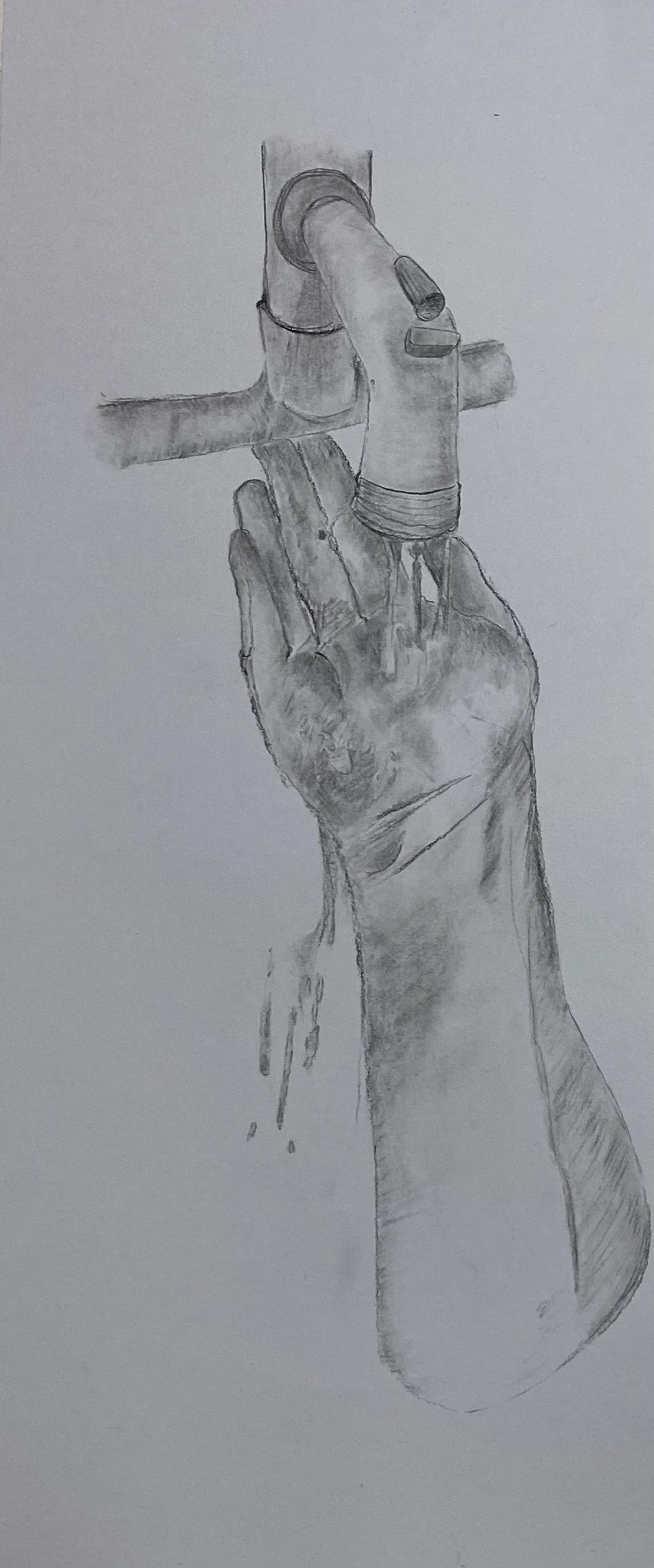Warts
"Time's Respite" by Abby Kurtz
Warts by Ani Mkrtchyan
I stared at the yellow wedge in my hand, its juices leaking onto my fingers.
We, as humans, are notorious for unusual methods to cure ourselves of whatever we wish to be cured of. Superstitions that ginger tea will relieve us of a headache, or that boiled fennel will lessen menstrual cramps are odd phenomenons passed down through generations that seem to work wonders for those that use them. Growing up with a traditional Armenian family, I was no stranger to these peculiar remedies. I had an abnormal infection on my thumb which doctors claimed to be a wart. It was unpleasant looking and painful. Every morning before school, I would wrap the lump with a bandaid, hiding it from the eyes of my friends and teachers. Countless doctors failed to appropriately diagnose and heal my flaw, and I was close to losing hope it would ever disappear. Every trip to the doctor, with every white-coated figure that made its way into the room, I would hope that it would be the day my hand finally regained its normality. Every walk back to the car, my head would hang as my parents rubbed my back after another disappointment.
And yet, one evening as I was talking to my grandmother, she proposed the strangest possible solution to the bulging lump which haunted my thumb. Due to her traditional upbringing in Soviet Armenia, she has various ways of healing ailments with a variety of foods and herbs. My grandmother suggested that I cut a potato in half, rub it over the lump, and then bury the potato in my backyard garden, the idea being that when the potato dried, my wart would follow suit and fall off. I refused to believe that my grandmother’s suggestion was going to work. “It’s foolish and a waste of time” was what I told my mother. But I was desperate and needed anything that could rid me of the wart. Could life really be as simple as using a potato to heal an infection? After this procedure, I stopped going to my appointments and held onto the hope that the potato buried in my backyard will magically heal my thumb. Just as my grandmother predicted, two weeks after I buried the potato, my infection ceased to exist.
Unbelievable.
Thinking back, I realized that it wasn’t just the potato that healed the wart, but rather my trust in the process and the faith that I had both in my grandmother’s advice and myself. I understood that life's obstacles will not always require complex resolutions. My doctors, with their abundance of medical expertise, would never have thought an Armenian superstition about the burial of half a potato would cure the mysterious growth on my thumb. My grandmother's suggestion both spared me more pain and sparked the belief that questioning the odder things in life could be detrimental to my growth, and that sometimes, with a sprinkle of faith, it is better to overcome stereotypical judgment. If I had lost hope or scoffed at my grandmother’s words, who knows how long I would have been stuck with the infection. Believing in myself and the potato’s healing capabilities is what allowed me to begin having faith in even the smallest things, serving as a constant reminder of overcoming difficulties through whatever means possible.

